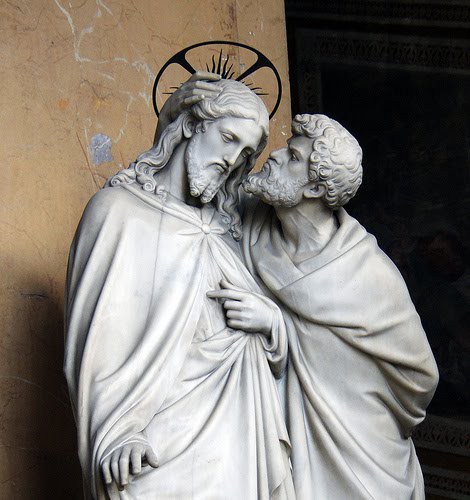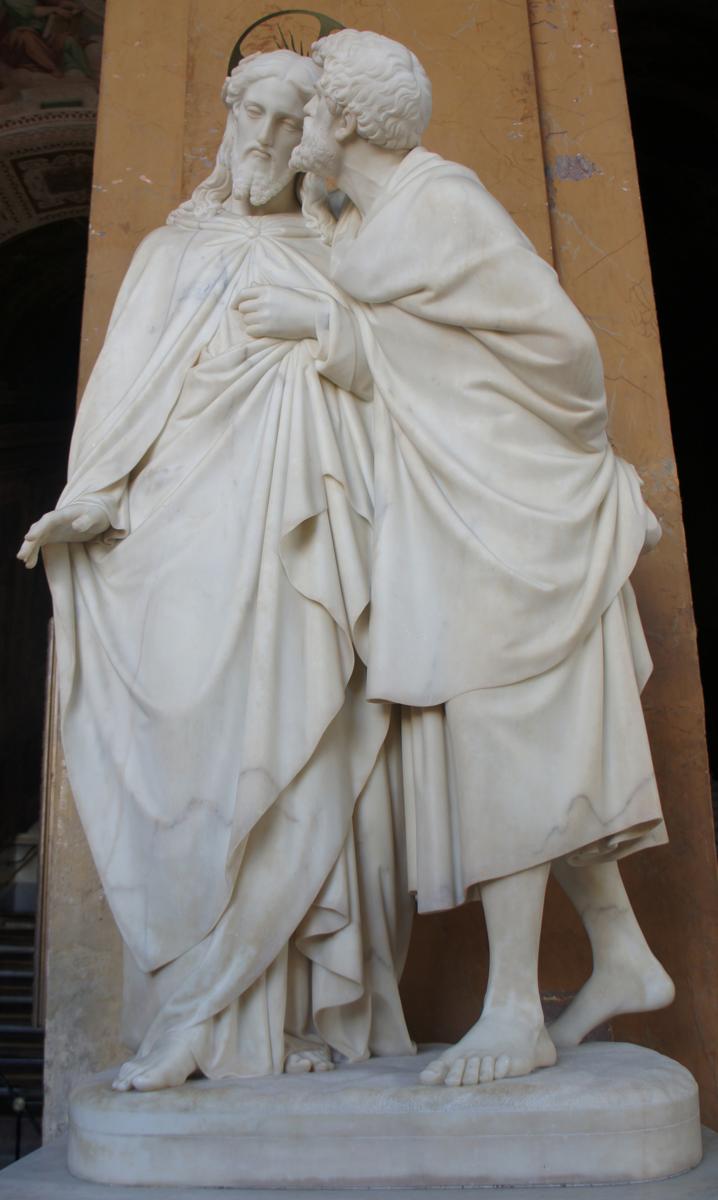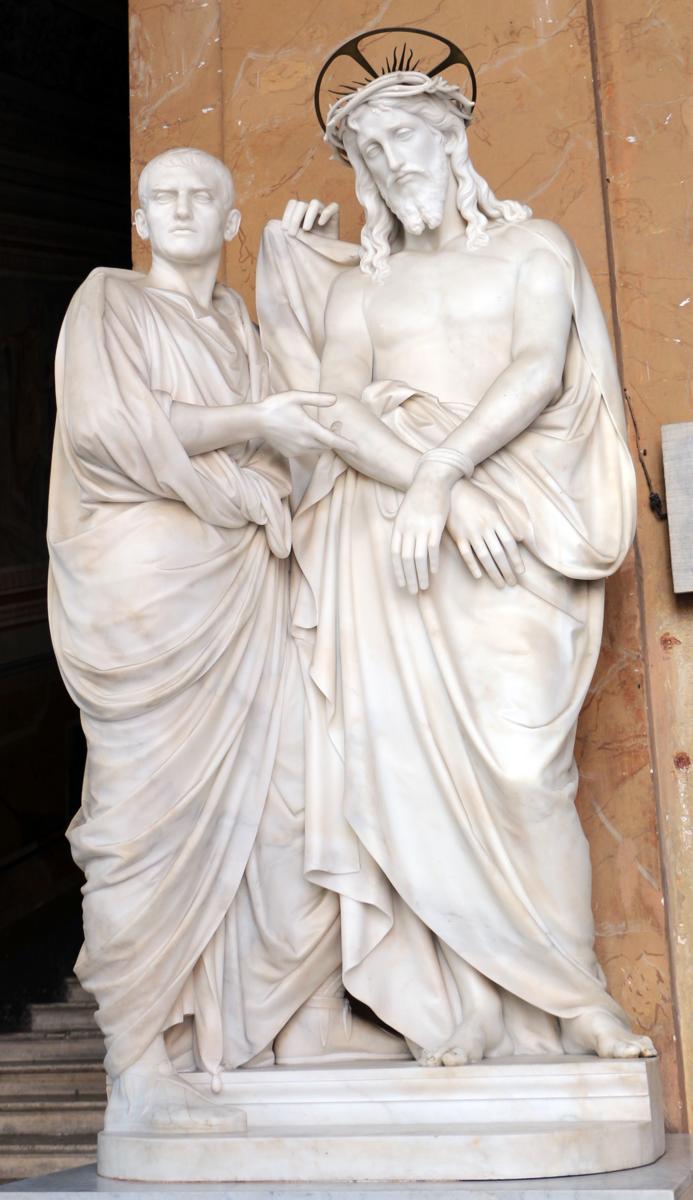April 8: A Friend's Betrayal
♫ Music:
Day 38 - Friday, April 8
Title: A FRIEND’S BETRAYAL
Scripture: PSALM 41:7-13; Psalm 55:12-14, 20-21
All who hate me whisper together against me;
Against me they devise my hurt.
“An evil disease,” they say, “clings to him.
And now that he lies down, he will rise up no more.”
Even my own familiar friend in whom I trusted,
Who ate my bread,
Has lifted up his heel against me.
For it is not an enemy who reproaches me;
Then I could bear it.
Nor is it one who hates me who has exalted himself against me;
Then I could hide from him.
But it was you, a man my equal,
My companion and my acquaintance.
We took sweet counsel together,
And walked to the house of God in the throng.
He has put forth his hands against those who were at peace with him;
He has broken his covenant.
The words of his mouth were smoother than butter,
But war was in his heart;
His words were softer than oil,
Yet they were drawn swords.
But You, O Lord, be merciful to me, and raise me up,
That I may repay them.
By this I know that You are well pleased with me,
Because my enemy does not triumph over me.
As for me, You uphold me in my integrity,
And set me before Your face forever.
Blessed be the Lord God of Israel
From everlasting to everlasting!
Amen and Amen.
Poetry:
Judas
by Vassar Miller
Always I lay upon the brink of love,
Impotent, waiting till the waters stirred,
And no one healed my weakness with a word;
For no words healed me without words to prove
My heart, which when the kiss of Mary wove
His shroud, my tongueless anguish spurred
To cool dissent, and which, each time I heard
John whisper to Him, moaned but could not move.
While Peter deeply drowsed within love’s deep
I cramped upon its margin, glad to share
The sop Christ gave me, yet its bitter bite
Dried up my ducts. Praise Peter, who could
Weep his sin away, but never see me where
I hang, huge teardrop on the cheek of night.
A FRIEND’S BETRAYAL
I sometimes read the betrayal of Judas as an elaborate work of choreography. The whole thing is planned steps, prophesied, and rehearsed. The psalmist sings about it ages in advance, Jesus chooses Judas with foreknowledge of this bitter end, and even tells him to go and get it over with after their fateful dipping of the bread. This seeming inevitability can make the heartbreak proper to this moment difficult to feel.
Ignazio Jacometti’s Bacio di Guida freezes this exquisitely intimate moment of betrayal in a graceful and pensive pair of figures. In the sculpture Judas’ kiss comes to the side of Jesus’ head, like one would kiss the head of a child. Jesus has a yielding gesture, inclining His head toward Judas to receive this unthinkable mixture of affection and treachery. The right hand of Jesus mildly gestures, palm-down, there is no resistance on the part of Christ, as He mysteriously causes and allows everything that is written to be fulfilled.
The material reality of this sculpture is that both figures are cut from the same block, the fabric of their robes and the masses of their upper torsos forming a physical continuity of stone. Jacometti’s treatment of the fabric of the robe of Judas, falling over the arm of Jesus, furthers the ambiguity as to where one figure ends and the other begins. These two figures, meant to represent the best and worst of humanity, are literally inseparable here, joined in stone as long as the stone endures. This joining also embodies the profound intimacy of the betrayal. Judas has just shared the sacred meal (or part of it) with Jesus, and for years now they have been part of each other’s lives. As I ponder Judas Iscariot in my heart, I wonder what steps brought him to this moment. Jesus had called him, he had responded. Were there small disagreements and disappointments with Jesus that began to fester? Did he regret responding to this man’s call? What metastasized into the bitterness or anger that would cause him to betray the man who had called him friend?
Matthew juxtaposes the anointing of Jesus at Bethany with the decision of Judas to betray Jesus for a small sum. The woman in the story, with her extravagant and undignified worship, is literally surrounded (in Chapter 26) by the clandestine, violent plot in which Judas becomes the central character. Perhaps there was something in her profligate act of worship, and in Jesus’ acceptance and affirmation of it and her, that Judas finally could not abide.
As I look again at Jacometti’s sculpture, I see the kiss of Judas as a kind of strange anointing. It falls on the same head as the woman’s oil. Even this most personal of betrayals is taken in and transformed by Christ as it seals his fate in Gethsemane. In the same church as Bacio di Guida is another work by Jacometti, Ecce Homo, the presentation of Jesus to the people by Pilate. As a pair they bookend the long, tragic night of failures of friendship, leadership, and virtue that were all gathered up by Jesus on His way to the cross.
Prayer (A Declaration):
Jesus,
You make good use of everything,
because you are Lord of All.
Even the betrayal of friends,
violence toward your body,
our daily denials and failings,
are gathered into your purposes.
Your ways are too full of meaning for words,
too full of goodness to comprehend.
Amen.
Jonathan Puls, M.F.A., M.A.
Chair of the Art Department
Associate Professor of Art History and Painting
Biola University
For more information about the artwork, music, and poetry selected for this day, we have provided resources under the “About” tab located next to the “Devotional” tab.
About the Artwork #1:
Il Bacio di Giuda (Kiss of Judas)
Ignazio Jacometti
1852
Marble
Scala Santa at St. John Lateran
Rome, Italy
About the Artwork #2:
Ecce Homo (Behold the Man)
Ignazio Jacometti
1854
Marble
Scala Santa at St. John Lateran
Rome, Italy
The Il Bacio di Giuda, which translates into English as The Kiss of Judas, is an exquisite marble sculpture carved by Italian artist Ignazio Jacometti. The sculpture captures the moment Judas Iscariot leans in and pulls Jesus towards himself to give the kiss of betrayal. It is a very powerful piece that displays an unbelievable amount of emotion, especially on the face of Jesus. Commissioned by the painter Tommaso Minardi, Il Bacio di Giuda, was sold to Pope Pius IX in 1852 and transported to the Scala Santa at St. John Lateran in Rome. The Scala Santa are said to be the holy stairs that led up to the praetorium of the Roman Governor Pontius Pilate in Jerusalem on which Christ stepped on his way to trial during his passion. The stairs reputedly were transported to Rome from Jerusalem by St. Helena sometime during the fourth century AD. To accompany Il Bacio di Guida, a second sculpture entitled Ecce Homo was commissioned from Jacometti. Ecce Homo, which translated into English is Behold the Man, are the Latin words used by Pontius Pilate as he presented a scourged Christ, crowned with thorns and bound, to a hostile crowd shortly before his crucifixion. Both sculptures are positioned at the entrance to the Scala Santa at St. John Lateran.
About the Artist:
Ignazio Jacometti (1819–1883)) was a neoclassical Italian sculptor. Jacometti originally attended Collegio Nazareno to become a lawyer but transferred in 1835 to the Accademia di San Luca in Rome, where he studied art. After graduation he taught several classes at the Academy of St. Luke before being appointed its director in 1861. In 1870, as director of the Papal Galleries and Museums, he played a vital role in registering the artifacts of the museums and making a new inventory of the collections. Jacometti’s work is beautifully displayed throughout Rome, and although his work has never become as renowned as work by artists such as Michelangelo or Bernini, the elegance and the emotion of his work is quite beautiful.
https://deathofjesus.wordpress.com/weston/bacio-di-giuda/
About the Music:
“Psalm 55 Hymn - Give Ear To My Prayer, God” from the EveryPsalm Project
Lyrics:
Give ear to my prayer, God
Do not hide from my cries
Give heed with Your answer
For I’m overwhelmed, I’m overwhelmed
My heart, it keeps pounding
Inside of my chest
With the terrors of death around me
Fear surrounding
And I can’t stop from trembling
Oh, had I wings!!
Had I wings!!
Had I wings, I would fly away
And find a place to rest
Oh, had I wings!!
Had I wings!!
Had I wings!!!
I could find some quiet in his wilderness
Come and confuse, Lord!
Divide these evil ways
For I have seen violence and oppressions
In the city night and day
Not by a stranger
But by my dearest friend
What sweet fellowship we once enjoyed
Now burns with bitterness
Oh, had I wings!!!
Had I wings!!
Had I wings, I would fly away
And find a place to rest
Oh, had I wings!!!
Had I wings!!
Had I wings, I could find some quiet
In this wilderness
[Musical interlude]
Smooth and enticing
But his heart was war
Softer than oil were his words
Yet they were ready drawn swords
These men of bloodshed
And deceit will see their end
But cast your burden on the Lord
And He’ll will sustain you yet again
Oh cast your burden on the Lord
And he’ll sustain you yet again
About the Performers/Composers:
Poor Bishop Hooper is Jesse and Leah Roberts
Both hailing from small towns in central Kansas, Jesse and Leah Roberts began writing, recording, and performing together after their marriage in 2013. What began as a duo, weaving together a patchwork of melodies atop an upright bass and a guitar, has blossomed into numerous, multifaceted expressions of music, art, and ministry. Though they still often perform classic covers and tunes in simple places, they have been blessed to develop a vibrant musical ministry—ranging from full-band, heavy-mood moments like that in The Golgotha Experience to the string- and vocal-laden scores of Firstborn. Their most recent project, EveryPsalm, began January 1, 2020, with plans to release a psalm-based song each week until all the Psalms are sung. They have shared music and conversation with thousands around the country, in the largest of concert halls to the smallest of living rooms. Their hearts for the Creator and the endless, bountiful inspiration he provides are ever growing.
https://www.poorbishophooper.com/
https://www.everypsalm.com/
About the Poet:
Vassar Miller (1924–1998) was a writer and poet born in Houston, Texas. Her lifelong struggle with cerebral palsy made the simplest tasks arduous, yet inspired ten volumes of searing and highly regarded poetry. Ms. Miller's work often explored religious themes, although she also wrote about her own pain and sense of isolation. Poems collected in Wage War on Silence made her a finalist for the Pulitzer Prize in 1961. In 1956, Miller published her first volume of poetry, Adam's Footprint. Her poems, most of which dealt with either her strong religious faith or her experiences as a person with a disability, were widely praised for their rigorous formality, clarity, and emotional impact. Her poems have been published in hundreds of periodicals and more than fifty anthologies. Over the course of a literary career which spanned almost forty years, Miller published ten volumes of poetry. An outspoken advocate for the rights and dignity of the handicapped, Miller also edited a collection of poetry and short stories about persons with disabilities titled Despite This Flesh. Miller received many awards and accolades for her poetry and in 1982 and 1988 Miller was named Poet Laureate of Texas.
https://www.poetryfoundation.org/poets/vassar-miller
https://en.wikipedia.org/wiki/Vassar_Miller
About the Devotion Author:
Jonathan Puls, M.F.A., M.A.
Chair of the Art Department
Associate Professor of Art History and Painting
Biola University
Jonathan Puls is a painter, writer, amateur musician, and family man. He teaches drawing, painting, and art history courses in Biola’s Department of Art and currently serves as its Chair. Jonathan enjoys encouraging artists of all ages and kinds, endeavoring to take all seriousness seriously.



